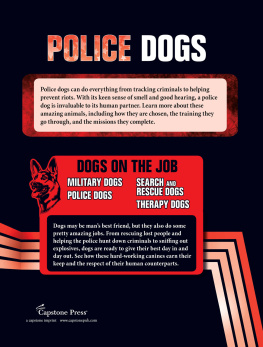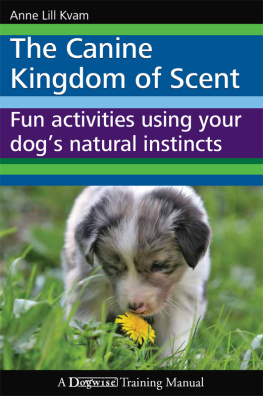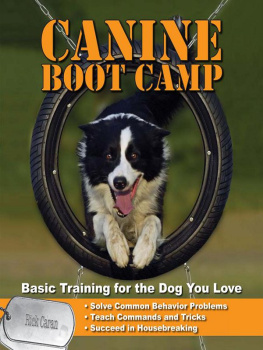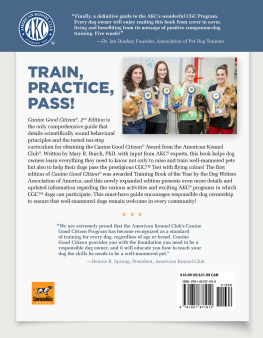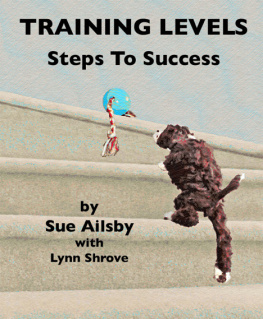EDITORIAL
Andrew DePrisco Editor-in-Chief
Amy Deputato Senior Editor
Jamie Quirk Editor
ART
Joanne Muzyka Senior Graphic Artist
Bill Jonas Book Design
Joanne Muzyka Digital Imaging
The publisher would like to thank the following photographers for their contributions to this book: Bernd Brinkmann, Wil de Veer, Isabelle Francais, Carol Ann Johnson, Stewart Event Images, Karen Taylor, Michael Trafford, Alice van Kempen, and Diane Lewis/AKC.
Cover photos by Isabelle Francais, Stewart Event Images, Diane Lewis/AKC, and Karen Taylor.

An Imprint of I-5 Press
A Division of I-5 Publishing, LLC
3 Burroughs, Irvine, CA 92618
Library of Congress Cataloging-in-Publication Data
Abney, Don.
Canine tracking guide / by Don Abney.
p. cm. (Country dogs series)
ISBN 978-1-59378-674-8
eISBN 978-1-59378-654-0
1. Tracking dogs. I. Title.
SF428.75.A26 2008
636.70886dc22
2008029187
All rights reserved. No part of this book may be reproduced, stored in a retrieval system or transmitted in any form or by any means, electronic, mechanical, photocopying, recording or otherwise, without the prior written permission of Kennel Club Books, except for the inclusion of brief quotations in an acknowledged review.
Printed and bound in Singapore
10 9 8 7 6 5 4 3 2 1
Contents
C HAPTER 1
The Dogs Nose
C HAPTER 2
Scent
C HAPTER 3
Selecting a Tracking Dog
C HAPTER 4
Scent: Sources, Handling, and Storing
C HAPTER 5
Training Preliminaries
C HAPTER 6
Tracking Lessons
C HAPTER 7
First Aid for Tracking Dogs
Introduction
P rior to any training, you should know that your dog already has the ability to smell and track. This is an inherited ability bestowed on every dog at birth. Since the dog is already proficient at this, you are actually going to teach him to identify a specific scent and lead you to its origin.
The information contained within these pages will help teach your dog to track a specific type of game, track a blood trail left behind by wounded game, find a lost person, or identify the presence of any scent, whether you are using your dog for hunting, working, or competition. I have used and taught these methods for search and rescue, tracking, cadaver, narcotics, arson, and game dogs with a great degree of success.
After spending a considerable amount of time studying human scent, I have concluded that all animals have their own individual scent. There is a common scent within each species, but each individual has a complex composition of cells that personalizes his or her scent. This individuality makes it possible for the dog to identify a specific scent and locate the source of that scent.
In training a dog to search for the source of a specific scent, you must realize that he knows the differences in these various scents. Your job is to teach him what and when to track. He can do thatand moreif the proper training is applied.
After reading this book, you may believe that this all sounds too simple. You must maintain your patience when training if you want your dog to understand what it is you are asking him to do. He does not understand human language, and you will have to learn to read the dogs actions and body language to know when he is working and what he is doing. You will have to learn to accept what the dog is trying to tell you and trust his judgment. Once he is taught, you will have a dog that will track almost any scent. It is just a matter of isolating the scent so that he knows what it is you want him to locate.
The greatest problem you will encounter in this training is your acceptance of the fact that the dog knows where the track is and where the scent is coming from. You will inevitably second-guess your dog and have him prove to you that you are mistaken before you come to realize that he knows what he is doing. Accepting this is the hardest thing for any handler to overcome. Following your dog into areas that you believe are incorrect is very hard, but when he shows you the source of the scent, you will become a believer. Dogs do not lie, and to them this is simply a game of hide-and-seek. Your dog is not going to take you out into strange areas just to make you look foolish.
The first dog I trained to track wounded prey was a Louisiana Catahoula Leopard Dog. Using the methods described in this book, I began training her at the age of seven months. In six short weeks, she successfully tracked and located her first wounded deer.
All dogs can detect scent, but some have a nose better suited for scent work and a stronger drive to locate the source of that scent. Shorter noses or the lack of this drive is what deters the use of some breeds for tracking. This book contains guidelines that will help you choose the right dog within a litter. You will have to decide which breed you want to use for the job.
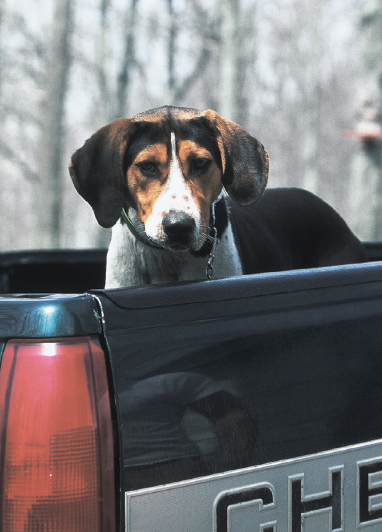
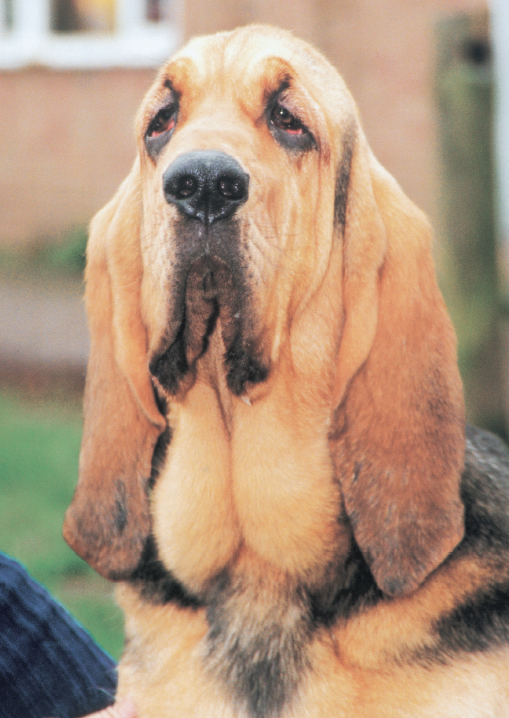
The most legendary nose in dogdom belongs to the Bloodhound.
Chapter
The Dogs Nose
Of all the dogs senses, the sense of smell is the most well developed, and the one on which he depends most throughout his life. Puppies are deaf and blind at birth and remain so for the first ten days of life, but they can locate their source of food (mom) within minutes of being delivered. When a birthing female leaves the den or whelping box to relieve herself, eat, or exercise, her puppies instinctively find a corner and bunch up for warmth. The pups know when she returns and can locate her, despite not being able to see or hear, because of their acute sense of smell.
The sense of smell is vital to mature dogs social skills. It enables them to quickly distinguish between known and unknown humans and other animals. In the male of the species, it is a primary factor in his ability to determine whether a female is in heat and receptive to mating. A dog also can smell certain changes in human body chemistry that influence his behavior. For example, in a state of fear or panic the human body produces adrenaline. Dogs can sense the odor of adrenalinethe smell of fearwhich provokes reactions ranging from heightened alertness to aggression. Through a combination of instinct and training, a tracking dog will be more motivated and work more intensely when searching for a person who is exhibiting fear.
Human Versus Canine Smell
A. First sense to develop:
Dog Smell
Human Touch
B. Primary sense for recognition:
Dog Smell
Human Sight
C. Last sense to fail:
Dog Smell
Human Touch/taste
How Keen Is the Dogs Sense of Smell?
By various calculations over the years, many individuals have estimated that dogs can detect scent ten times better than humans can. In truth, no one knows the exact capacity or efficiency of the dogs nose, because no man-made instrument is capable of measuring it. We can only speculate as to what degree a dogs nose is more sensitive than a humans, but there is evidence that the dog can detect and identify scent better than any instrument devised by humans.
Estimates of efficiency differ for different odors and different breeds. But even though some dogs ability is better than others, the dogs keen sense of smell is definitely a genetic trait. A 1972 study of German Wirehaired Pointers by G. Geiger, using a sample of 613 males and 573 females, concluded that 46 percent of the breeds tracking ability and 39 percent of its scenting ability are inherited, whether the offspring come from working or nonworking parents.
Next page
